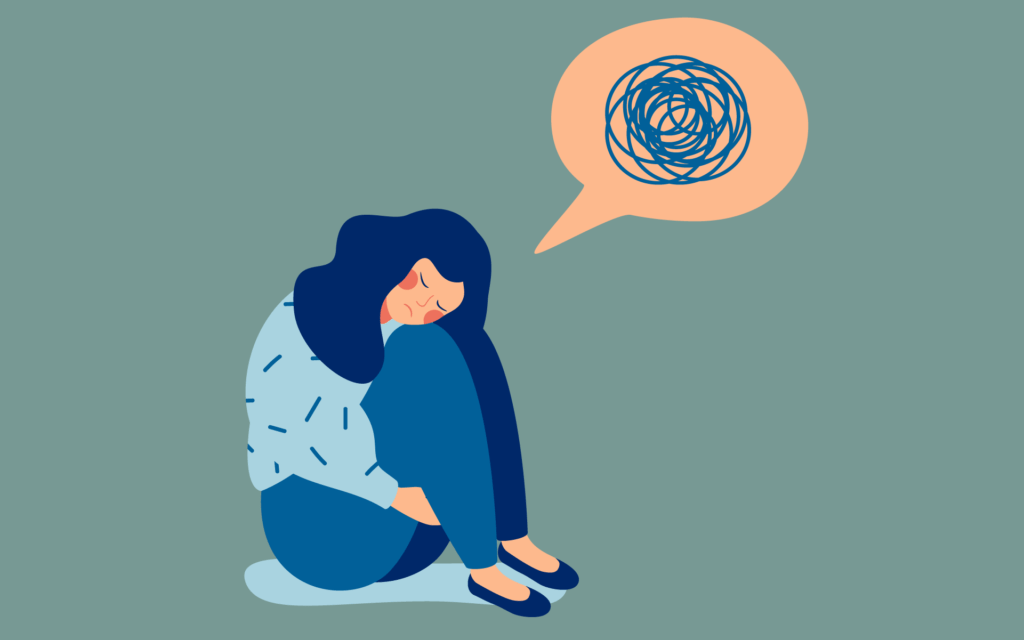Definition of Generalized Anxiety Disorder
Generalized Anxiety Disorder (GAD) falls under stress-related disorders and is characterized by persistent, widespread, and diffuse worries that are not tied to any specific event or circumstance, nor to past events that are no longer relevant. Additionally, this disorder frequently associates with chronic stress and, despite its fluctuating course, tends to be chronic.
Causses
The exact causes of Generalized Anxiety Disorder remain unclear, but the following factors are believed to play a role:

- Role of stress: Stress is a triggering factor for the onset of the disorder. While stress can be significant, it is often related to everyday psychosocial events that are usually mild but chronic.
- Role of personality: Individuals with traits such as a tendency to worry, meticulousness, and cautiousness more commonly develop GAD. Furthermore, those with a weaker personality structure also show a higher prevalence of this disorder.
- Role of environment and physical health: A healthy body and a positive environment support an individual’s ability to cope with stress, whereas the opposite may contribute to the development of the disorder.
Symptoms of Generalized Anxiety Disorder
Pathological anxiety involves excessive or persistent worry that is out of proportion to the perceived threat and significantly impacts the individual’s functioning. Moreover, it may be accompanied by thoughts or behaviors that seem excessive or irrational.
When pathological anxiety begins to impact family life, social interactions, and work, it hinders daily functioning. In particular, some manifestations of abnormal anxiety include:

- Thoughts/Feelings: These may include a sense that something terrible is about to happen. Additionally, individuals may experience a strong need to escape, feelings of tension, and fears of going crazy, dying, or losing control.
- Behaviors: Avoidance/attack/resistance.
- Physical symptoms:
- Cardiovascular: Rapid, powerful, or irregular heartbeat, feeling heaviness in the left chest area.
- Vascular: Pallor or redness, cold and sweaty hands and feet, hypertension.
- Respiratory: Hyperventilation, sensations of tightness and shortness of breath, fear of suffocation.
- Musculoskeletal: Trembling, muscle tension, feelings of weakness or paralysis, sensations of numbness and tingling.
- Gastrointestinal: Throat tightness, difficulty swallowing, nausea, stomach pain, diarrhea.
- Autonomic Nervous System: Sweating, dilated pupils, frequent urination.
- Central Nervous System: Dizziness, lightheadedness, blurred vision, headaches, insomnia, decreased concentration, fatigue, muscle weakness.
Diagnosis
Diagnostic Criteria for Generalized Anxiety Disorder (GAD) according to the Diagnostic and Statistical Manual of Mental Disorders, Fifth Edition (DSM-5):
A. Excessive anxiety and worry (apprehensive expectation) occurring more days than not for at least six months about several events or activities (such as work or school performance).
B. The individual finds it difficult to control the worry.
C. The anxiety and worry are associated with three (or more) of the following six symptoms (with at least some symptoms present more days than not for the past six months).
- Restlessness or feeling keyed up or on edge.
- Being easily fatigued.
- Difficulty concentrating or mind going blank.
- Irritability.
- Muscle tension.
- Sleep disturbance (difficulty falling or staying asleep, or restless, unsatisfying sleep).
D. The anxiety, worry, or physical symptoms cause clinically significant distress or impairment in social, occupational, or other important areas of functioning.
E. The disturbance is not attributable to the physiological effects of a substance (e.g., a drug of abuse, a medication) or another medical condition (e.g., hyperthyroidism).
F. Another mental disorder does not better explain the disturbance.
Differential Diagnosis:
- Anxiety disorder due to another medical condition: hyperthyroidism, etc.
- Substance-induced anxiety disorder and other obsessive-compulsive disorders.
- Other mental disorders include major depressive disorder, somatic symptom disorder, schizophrenia, and delusional disorder.
Treatment
Generalized Anxiety Disorder responds well to treatment and often stabilizes after a short period of therapy. However, the effectiveness of treatment depends on the severity and cause of the anxiety. Additionally, GAD is closely related to anxious personality traits and stress, which leads to a high rate of recurrence.
To prevent complications, consider the following precautions:
- Late detection and delayed treatment may result in suicidal behavior.
- Furthermore, complications can arise from the misuse of anxiolytic drugs.
Strategies for managing anxiety and reducing stress include:
- Providing rational explanations regarding the patient’s physical issues and somatic symptoms.
- Encouraging the patient to face anxiety-inducing or stressful situations.
- Engaging in physical activities, such as relaxation exercises and exercise, to involve the patient.
- Additionally, avoiding the abuse of alcohol and sedative drugs.
Symptomatic treatment:
- Prefer monotherapy (select one of the listed medications; if not compelling, consider using both an antidepressant and an antipsychotic, which are more commonly recommended).
- Start with a low dose and gradually increase until effective.
- Limit the use of addictive anxiolytic drugs.
Pharmacotherapy:
- Anxiolytics: Diazepam, Lorazepam, Bromazepam.
- Antidepressants: Amitriptyline, Sertraline, Duloxetine.
- Antipsychotics: Olanzapine, Risperidone, Quetiapine.

Psychotherapy:
- Rational explanation therapy.
- Relaxation training therapy.
- Cognitive-behavioral therapy (CBT).
- Family therapy.
Movement therapy, occupational therapy.
Prevention
Generalized Anxiety Disorder is a preventable condition. The most effective measures involve self-training and altering one’s thoughts and mindset. Specifically, these measures include:
- Managing stress and developing personality.
- Practicing to break avoidance behaviors and recognizing the pathological coping cycle.
- Enhancing independence.
- Regularly practicing relaxation techniques.

